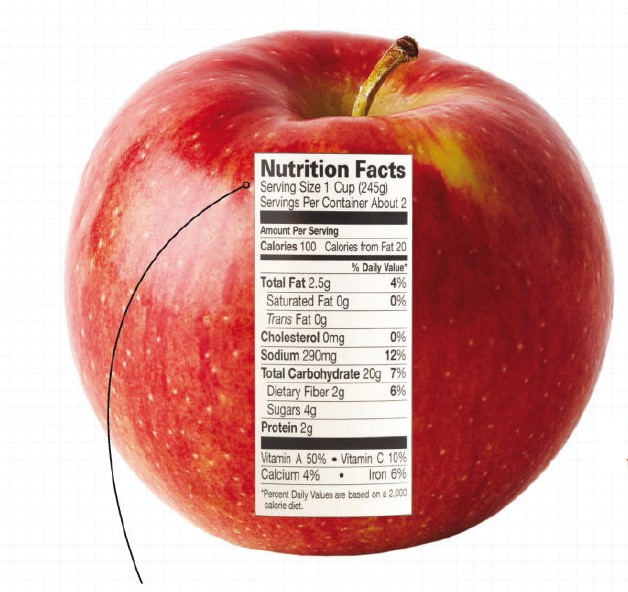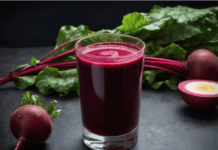What Causes Diabetes
What causes diabetes? There is more than one reason why a person can have diabetes, which is why there’s more than one type of diabetes.
TYPE 1 diabetes is an autoimmune disorder in which the body destroys its insulin-producing beta cells.
Without insulin, the body is unable to convert glucose into energy. People with type 1 diabetes need to inject insulin to live. Type 1 accounts for about 5 percent of diabetes cases.
TYPE 2 diabetes has several causes, such as excess weight, sedentary lifestyle, and genetics.
Type 2 diabetes can be caused when the body’s muscle, liver, and fat cells resist the effects of insulin, which causes a buildup of glucose in the blood.
This is called insulin resistance. Type 2 diabetes can also be caused by inadequate insulin secretion from the beta cells in the pancreas.
This is called insulin deficiency, which can be caused by genetics and sometimes by insulin resistance years.
Many people with type 2 have both insulin resistance and insulin deficiency.
PREDIABETES means a person’s blood sugar levels are higher than they should be—just not high enough to be diagnosed as type 2 diabetes.
If you have prediabetes, you can avoid a future diagnosis by eating healthier food and exercising.
What happens when I eat?
“Before you had diabetes, your body was on autopilot,” says Donna Starck, RD, LD, CDE,
of Unity Point Health in Des Moines.
When you ate carbohydrate, your blood sugar would rise, and your pancreas would
respond with the right amount of insulin, a hormone that allows the body’s cells to
receive and use glucose for energy.
With diabetes, your body requires assistance. This is because your body isn’t making
any insulin isn’t producing enough insulin or can no longer properly use the insulin it
produces.
This is what happens when a person with type 2 diabetes eats carbohydrate:
1. Food goes down your esophagus and into your stomach.
2. The digestive system quickly breaks down carbohydrates into glucose.
According to the American Diabetes Association (ADA), overweight people with prediabetes can lower their risk of developing type 2 diabetes by losing 7 percent of their body weight
(that’s 14 pounds for a 200-pound person) and exercising moderately (such as a brisk walk or swim) for 30 minutes a day, five days a week.
How can I manage my diabetes?
To manage type 1 diabetes, you inject synthetic insulin into your body when
you eat carbohydrates.
Type 2 diabetes is a little more complicated, but its progression can be managed by eating healthfully, exercising, monitoring your blood sugar, and taking medication.
All people with diabetes should have a team of health professionals, including an endocrinologist and certified diabetes educator (CDE).
They’ll provide the knowledge you need to live well and prevent complications associated
with high blood sugar. It’s also good to keep written references handy.
That’s why we’re here. Read on for Diabetic Living’s four-step plan for managing healthy eating.
How do I find a certified diabetes educator?
Visit https://diabeteseducator.org/patient-resources/find-adiabetes-educator
to find a CDE in your area.
What affects my blood sugar levels?
Carbohydrates will make your blood glucose rise, which is why it’s important to learn how to count carbs.
But other factors such as stress, illness, infection, sleep disturbances, pain, and being more sedentary than usual also increase blood glucose.
Exercise and some medications can bring blood glucose down.
How often should I check my blood sugar?
When you’re first learning to manage diabetes, check your blood glucose
level several times a day. Because the cost of diabetes supplies can really add up, you might not be able to check as often as you’d like.
To get the best overall picture of how you’re managing your diabetes, test at
alternate times.
For example, one day test when you wake up (also called a fasting reading); the next, test before a meal and then two hours after.
This illustrates how the food at a meal did or did not affect you. Test at different times of the day, so you learn how food intake, stress, and other daily events impact your blood
sugar.
Please keep track of your levels and what influenced them in a logbook. Always discuss checking your blood glucose and appropriate blood glucose level goals with your health care team.
Blood Glucose Levels
Fasting: 80–130 mg/dl
Before a Meal:80–130 mg/dl
1–2 hours after a meal: less than 180 mg/dl
How To Eat Healthily
Incorporate one of these healthy concepts into your everyday routine.
Then try another. Over time you’ll learn how to manage your diabetes best.
1. Count Carbs
Just because you have diabetes doesn’t mean you can’t enjoy carbs. In fact,
you need to eat carb-containing foods to stay healthy.
Carbohydrate is an important nutrient that gives your body the energy it needs to function.
KNOW YOUR NUMBER Foods with carbohydrates have the greatest effect on your blood sugar. “Excessive carbohydrate consumption, even if it’s healthy food, will raise blood sugar,” says Dodi Gooding, R.N., RD, LD, CDE, of Des Moines.
This is why it’s important to be aware of how much carbohydrate you are consuming. When counting carbs, think of 1 carb choice as 15 grams of carb.
• Women: 3–4 carb choices per meal (45–60 grams of carb.)
• Men: 4–5 carb choices per meal (60–75 grams of carb.)
Always consult your diabetes educator or primary care provider to find
the right balance for you.
SPREAD OUT
Eating a day’s worth of carbs in one sitting can cause a huge jump in blood sugar while skipping a meal might push blood sugar too low. Spreading the carb load throughout the day prevents blood fluctuation.
3 TYPES OF CARBOHYDRATE
• Sugar, also known as a simple carbohydrate, can be found naturally in fruit and milk.
It is also added to many foods during processing.
• Starch includes grains like rice, bread, and pasta; starchy vegetables such as corn, peas,
potatoes; and dried beans and lentils.
• Fiber, which is found in plant foods, is absorbed very slowly. There are different types of
fiber—some have cardiovascular benefits, and others have digestive benefits.
To add fiber to your diet, try eating more legumes, vegetables, fruits, and whole grains.
2 READ LABELS
Learning to read food labels will help you make smarter food choices. Labels are a great tool for counting calories and carb and fat grams.
SERVING SIZE Always notes the serving size on a food label. Just because a food appears to be packaged for individual consumption doesn’t mean it contains a single serving.
Depending on how much of one food or drink you consume, you may need to multiply calories and carbohydrate grams by two or three or consider eating a smaller portion.
CALORIES When trying to lose or maintain weight, calories are key. Your health care provider, certified diabetes educator (CDE), or registered dietitian can figure out a healthy daily intake. Keep track in a logbook.
TOTAL FAT Total fat includes all the fats—good and bad—in the packaged food. Look for foods low in saturated fat—this type may increase your risk for heart disease.
“Saturated fats turn hard at room temperature, and essentially that’s what they’re doing in your arteries,”
Gooding says. Eating any fat in excess can cause weight gain, a factor in insulin
resistance. A health care provider can determine the right amount for you.
TOTAL CARBS Your carb count comes from “total carbohydrate” This is the total of all types of carbohydrates, including starch, sugars (natural and added), and fiber.
Calculate carbs based on the serving size and the number of servings you eat. If one slice of bread contains a total of 15 grams of carb .. but you eat two slices. Your total intake is 30 grams of carb.
SODIUM The American Diabetes Association recommends limiting sodium intake to 2,300 milligrams a day. If you have or are at risk for hypertension, further sodium reduction should be individualized.
Gooding recommends buying fresh or frozen vegetables over canned foods. And instead of buying deli meat in a package, go to the meat counter and get it freshly sliced.
DIETARY FIBER Fiber helps you feel full longer, so always compare food labels and pick the one with the most fiber. Servings with more than 3 grams of fiber are a good bet.
3 Control Portions
Recalibrate Your Plate The Plate method is similar to the U.S. Department of Agriculture’s MyPlate method, but with a diabetes focus.
Divide your plate into three sections as follows:
- ½ nonstarchy vegetables Fill half your plate with raw or cooked vegetables such
as broccoli, green beans, cauliflower, cucumber, peppers, salad greens, asparagus,
zucchini, and tomatoes.
You’ll get plenty of nutrients without spiking your blood sugar.
• ¼ starch or grain Choose 1–2 carb choices (15–30 grams of carb.) such as bread,
pasta, rice, tortilla, beans, or starchy vegetables like potatoes, corn, or peas.
Pick whole grains and beans full of fiber to keep you feeling full and your blood sugar steady.
• ¼ protein Choose lean protein options. Try poultry, pork, lean beef, seafood, tofu,
eggs, cheese, and nuts.
One serving of protein is 3 ounces (about the size of a deck of cards or the palm of your hand).
MIX IT UP Implement the plate method when cooking casseroles and soups.
Just think of the ingredients separately. For example, chili traditionally has meat, beans,
tomatoes, onions, and peppers, covering all of the plate method ingredients, says Donna Starck, RD, LD, CDE, of Des Moines.
For casseroles heavy in carbs, like tuna and noodles, 1 cup is generally 30 grams of carb.
PORTION CONTROL As you ease into portion control, weigh and measure foods often.
When you don’t have measuring utensils with you, use your hand to estimate; while the
measurements aren’t exact, they’re better than a guess.
• Clenched fi st = 1 cup
• Palm = 3 ounces
• Two fingers lengthwise = 1 ounce
• Tip of thumb to first knuckle = 1 tablespoon
• Thumb = 2 tablespoons
4 Get Cooking
Learning to cook healthfully at home is a crucial step to living well with diabetes. Cooking your own meals allows you to control ingredients and portions better.
BOOST FLAVOR Low-sodium doesn’t mean low-flavor. Fresh herbs, spices, and citrus provide bold flavor, helping you feel satisfied.
Adding peppers, garlic, and onion is another way to incorporate flavor.
USE HEALTHY FATS Not all fat is bad. You can make smarter choices in the kitchen by swapping out saturated fats such as butter with better-for-you unsaturated fats like canola
oil and olive oil.
But all fats are high in calories, so use them in moderation.
LIMIT SUGAR It’s natural to want a sweet treat, but use sugar sensibly. Any form—white, brown, honey, syrup—add calories and carbs with no nutritional value.
Some people with diabetes prefer sugar substitutes to manage calories and carbs while satisfying a sweet tooth.
PLAN AHEAD It’s hard to cook a meal after a busy workday. Planning your meals is crucial to staying on track, Starck says.
For each meal, determine your starch, protein, and nonstarchy veggie choices. Time-savers:
Consider cooking casseroles and meats in bulk and freezing them for later. Try placing ingredients in a slow cooker in the morning, so dinner is ready when you come home.
References








